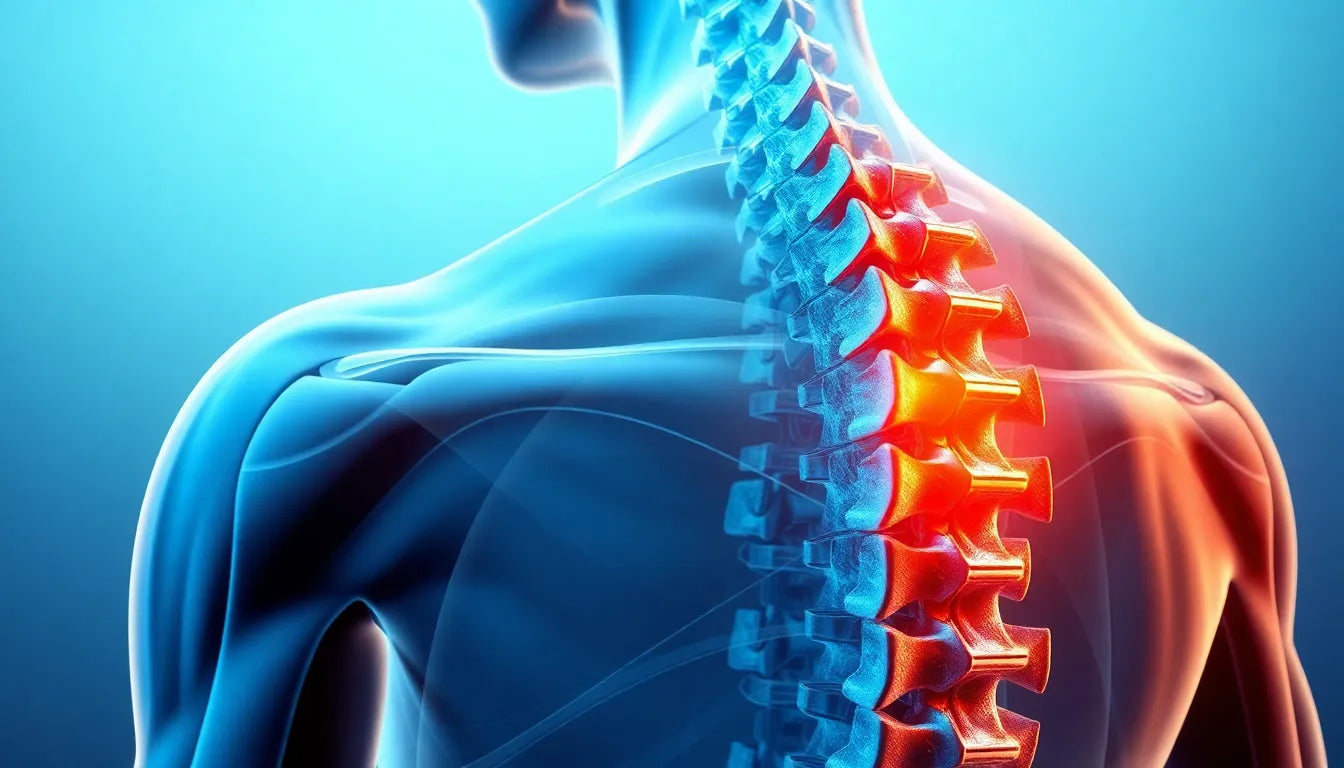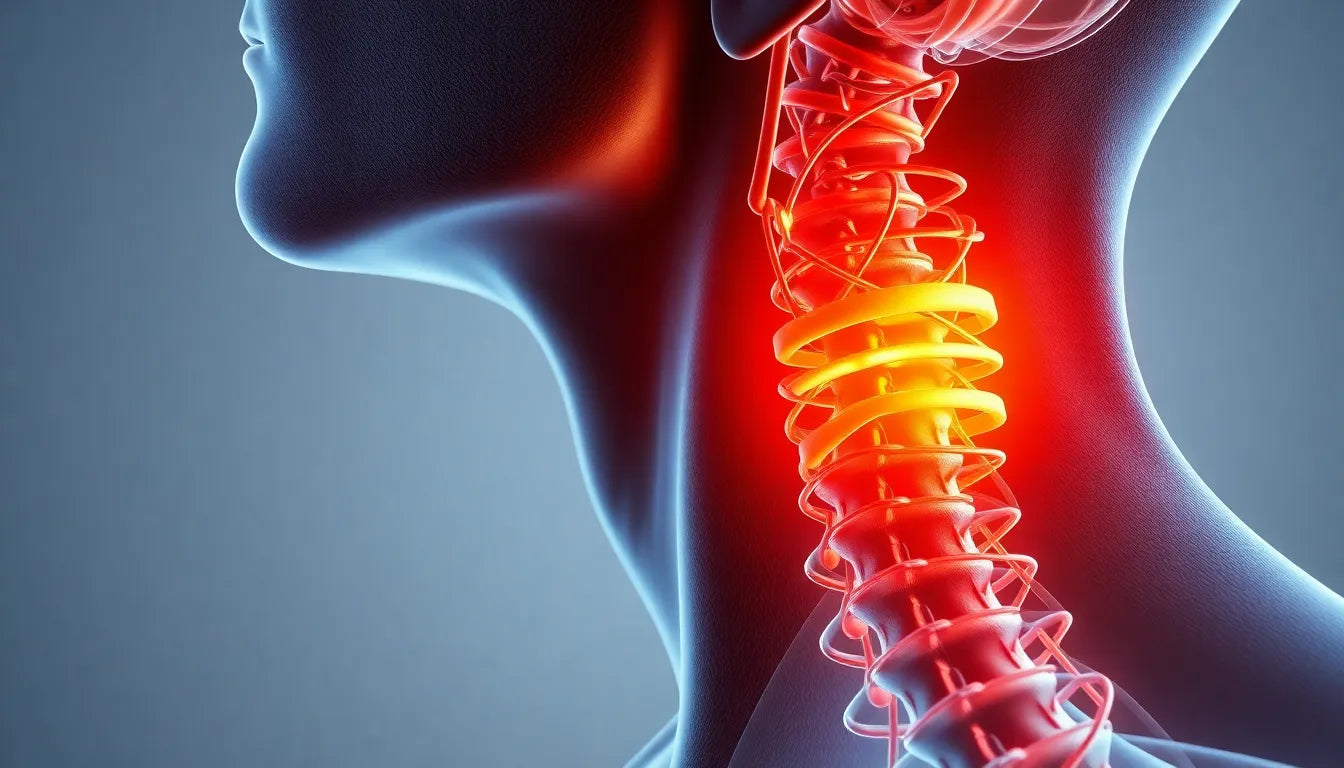Living with a herniated disc can be a significant challenge, as it often imposes physical limitations and persistent pain that can disrupt daily life. A herniated disc occurs when the soft inner gel of a spinal disc pushes through a tear in the tougher outer layer, leading to discomfort and mobility issues. For individuals dealing with this condition, managing weight becomes crucial. Excess weight can intensify symptoms by increasing the pressure on the spine, making weight management not just a health goal, but a necessity.
the dual benefit of weight loss with a herniated disc
Embarking on a weight loss journey while managing a herniated disc offers dual benefits. Not only does shedding extra pounds help alleviate pain by reducing spinal pressure, but it also contributes to overall spinal health. This dual approach is essential for those seeking relief from the discomfort associated with a herniated disc. Incorporating a safe, low-impact exercise routine is key to achieving these benefits without exacerbating the condition. Tailored exercises can help maintain fitness levels and promote weight loss, all while being gentle on the back.
setting the stage for safe exercise
Despite the physical limitations imposed by a herniated disc, individuals can still achieve their weight loss goals through carefully selected exercises. The focus should be on gentle activities that promote fitness and weight management without aggravating the condition. Low-impact exercises, such as walking, swimming, and cycling, provide effective ways to stay active while minimizing strain on the spine. These activities not only support weight loss but also enhance cardiovascular health and overall well-being.
By understanding the challenges posed by a herniated disc and the importance of weight management, individuals can take proactive steps toward a healthier lifestyle. With the right approach, it is possible to lose weight safely and improve spinal health, paving the way for a more comfortable and active life.
low-impact exercise options for weight loss with a herniated disc
When managing weight with a herniated disc, choosing the right exercises is crucial. Low-impact activities are ideal as they minimize stress on the spine while promoting calorie burn and cardiovascular health. Let's explore some effective options.
walking: a gentle start
Walking is one of the simplest and most accessible exercises for those with a herniated disc. It's a low-impact aerobic activity that aids in weight management without placing undue stress on the spine. A suggested routine involves walking for at least 250 minutes per week, which can be broken down into shorter, manageable sessions. Gradual progression is key—start with shorter distances and increase as comfort and endurance improve. Consistency in walking not only aids weight loss but also enhances overall spinal health and well-being.
swimming and aquatic therapy
Swimming and aquatic exercises are highly recommended for individuals with a herniated disc. The buoyancy of water reduces the impact on the spine, allowing for a full-body workout that improves cardiovascular health and aids in weight loss. A routine of 30 minutes of swimming daily can significantly contribute to weight management goals. Scientific studies have shown that aquatic therapy can effectively relieve back pain while providing a safe environment for exercise. This makes swimming an excellent choice for those seeking to lose weight without exacerbating their condition.
cycling and elliptical training
Stationary cycling and elliptical machines offer effective cardiovascular workouts that are gentle on the back. These exercises engage multiple muscle groups, promoting calorie burn and weight loss. When using these machines, it's important to maintain proper posture to avoid additional strain on the spine. Adjust the seat and handles to ensure comfort and support. Start with moderate intensity and gradually increase as your fitness level improves. Both cycling and elliptical training provide a safe way to stay active and manage weight effectively.
strength and flexibility routines for spinal health
Incorporating strength and flexibility exercises into your routine can further support weight loss and spinal health. These exercises help build core strength and improve flexibility, which are essential for maintaining a healthy back.
core strengthening exercises
Strengthening the core is vital for supporting the spine and reducing pain associated with a herniated disc. Exercises such as pelvic tilts and partial crunches can be performed safely without straining the back. Aim for a routine of 10-15 repetitions of each exercise, performed 2-3 times per week. Focus on controlled movements and proper form to maximize benefits while minimizing the risk of injury.
stretching for flexibility
Stretching exercises are important for improving flexibility and complementing weight loss efforts. Gentle stretches, such as hamstring and neck stretches, can alleviate tension and enhance mobility. It's crucial to perform these stretches slowly and avoid any movements that cause pain or discomfort. Incorporating stretching into your daily routine can help maintain flexibility and support overall spinal health.
By integrating these low-impact exercises and routines into your lifestyle, you can effectively manage your weight while supporting spinal health. Remember to listen to your body and progress at a pace that feels comfortable. With dedication and the right approach, achieving your weight loss goals while managing a herniated disc is entirely possible.
integrating weight loss with overall recovery
Weight management plays a crucial role in a holistic recovery plan for those with a herniated disc. By incorporating physical therapy and pain management strategies, individuals can enhance their recovery journey. Reducing excess weight helps decrease inflammation and spinal pressure, which are common contributors to discomfort. A balanced approach that combines gentle exercises with dietary adjustments can lead to significant improvements in both spinal health and overall well-being.
clinical insights and evidence
Scientific studies have established a strong link between obesity and an increased risk of herniated discs. Excess weight places additional stress on the spine, particularly in the lumbar region, exacerbating symptoms and potentially leading to further complications. By lowering body mass index (BMI), individuals can reduce the strain on their spinal discs, promoting long-term health and preventing future injuries. Weight loss serves as both a preventive and therapeutic measure, offering a pathway to improved spinal health and quality of life.
frequently asked questions
Can weight loss improve herniated disc symptoms?
Yes, weight loss can significantly improve symptoms associated with a herniated disc. By reducing spinal pressure and inflammation, weight loss alleviates pain and enhances mobility. This is particularly beneficial in managing chronic discomfort and promoting recovery.
What are the best exercises for someone with a herniated disc?
The best exercises for individuals with a herniated disc are low-impact activities that minimize spinal strain. Recommended exercises include walking, swimming, cycling, and core-strengthening routines such as pelvic tilts and partial crunches. These exercises should be performed with a focus on safety and gradual progression to avoid exacerbating the condition.
How can I ensure I’m not overexerting myself during exercise?
To avoid overexertion, monitor your pain levels and listen to your body. Set realistic goals and gradually increase the intensity of your workouts. It is essential to consult with healthcare professionals, such as physical therapists, to tailor an exercise program that suits your individual needs and limitations.
final thoughts
Approaching weight loss and exercise with patience and caution is vital for individuals with a herniated disc. Prioritizing spinal health through safe, low-impact exercises and a balanced diet can lead to successful weight management and improved quality of life. With the right strategies and support, achieving weight loss goals is possible, even when dealing with a herniated disc. Remember, a gradual and consistent approach is key to long-term success and spinal health.
Sources
- Verywell Health. "16 Exercises for Herniated Disc."
- Mainstay Medical. "Effective Exercises For Herniated Disc in Lower Back."
- HSS Spine. "Lumbar Disc Herniation FAQs."
- Orthopedic Institute of NJ. "20 Herniated Disc Exercises & Stretches."
- PubMed. "Study on Obesity and Herniated Discs."
- Medical News Today. "Herniated Disk: 6 Safe Exercises."


















